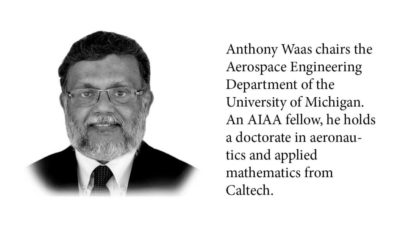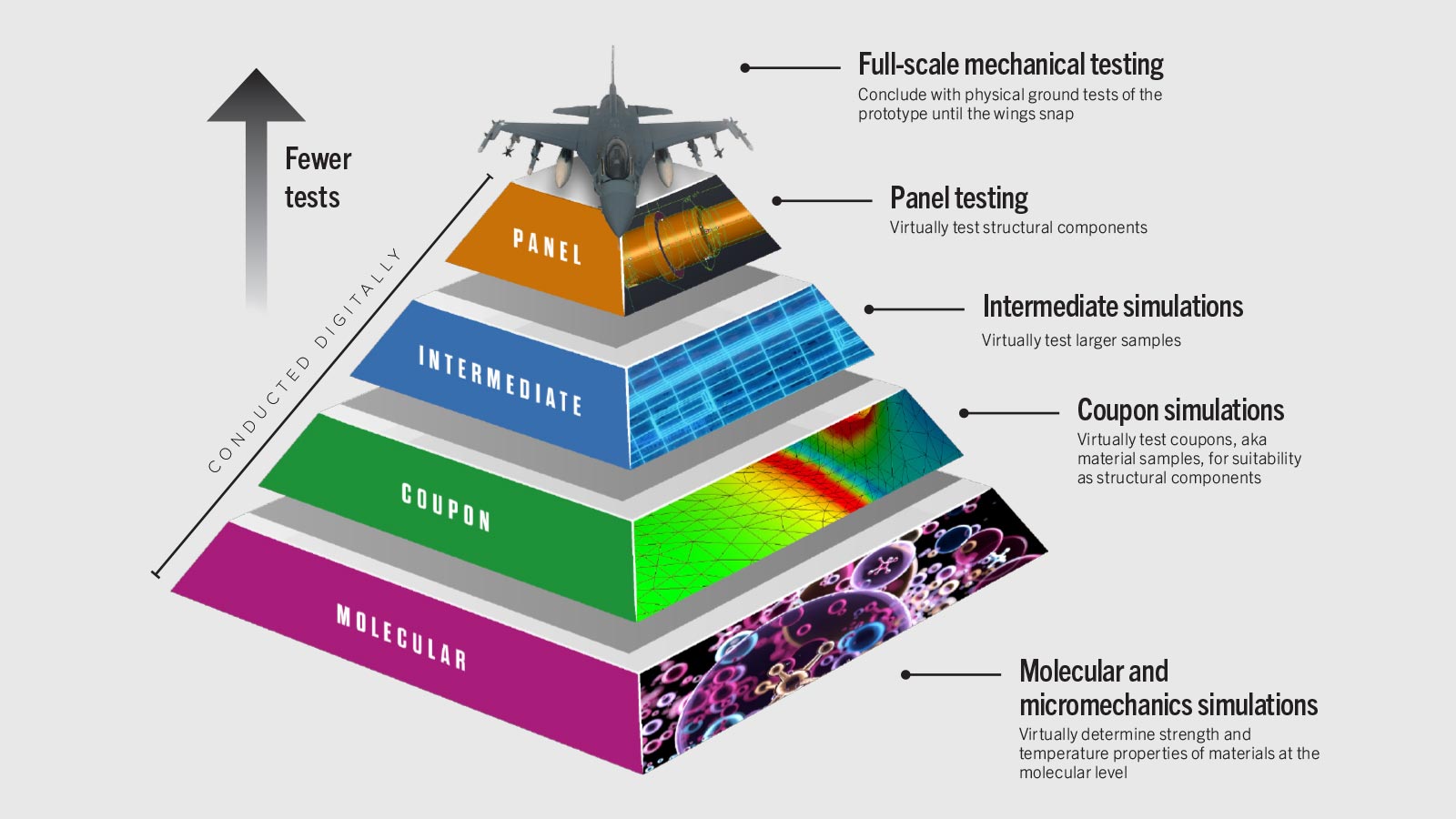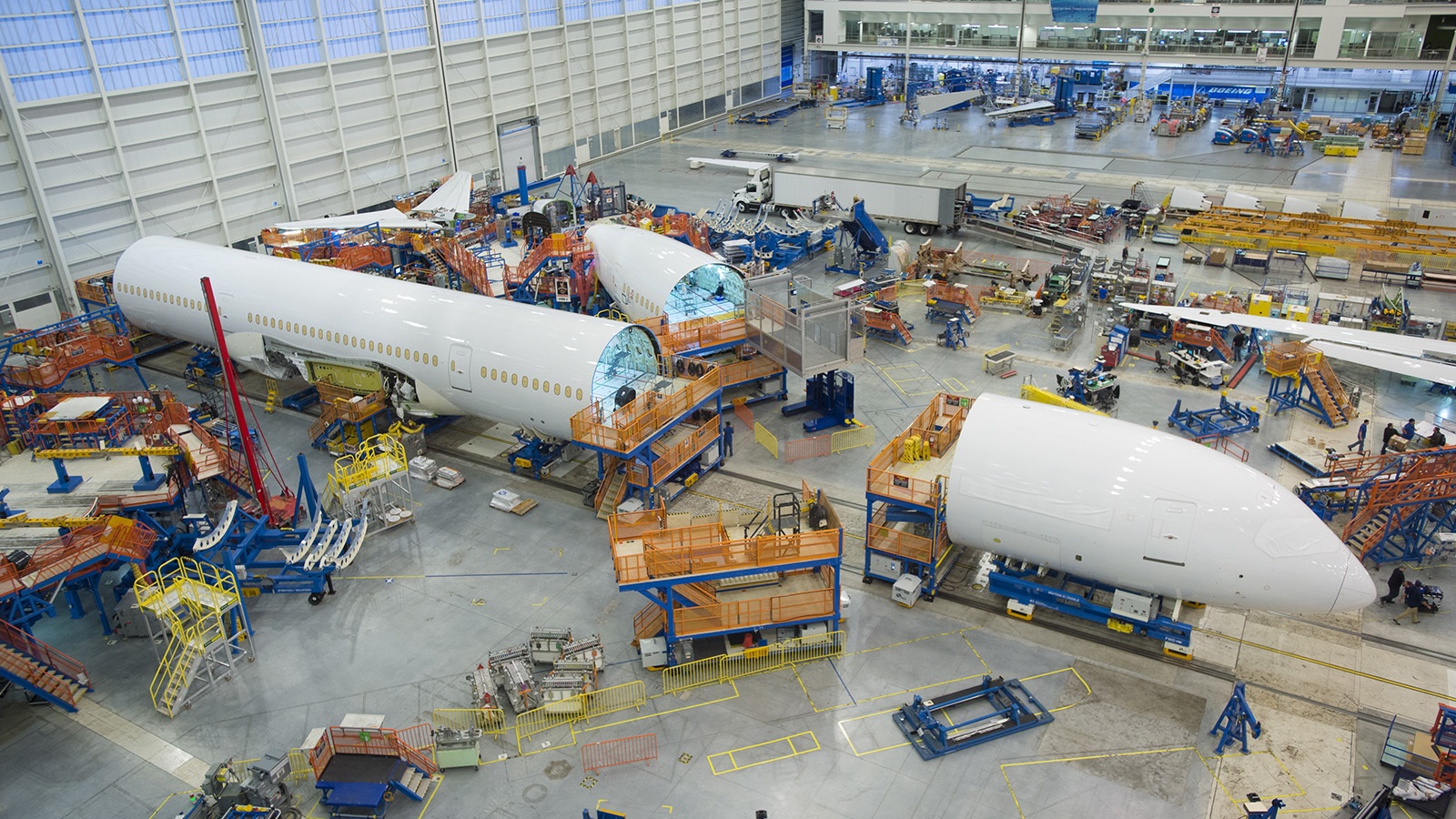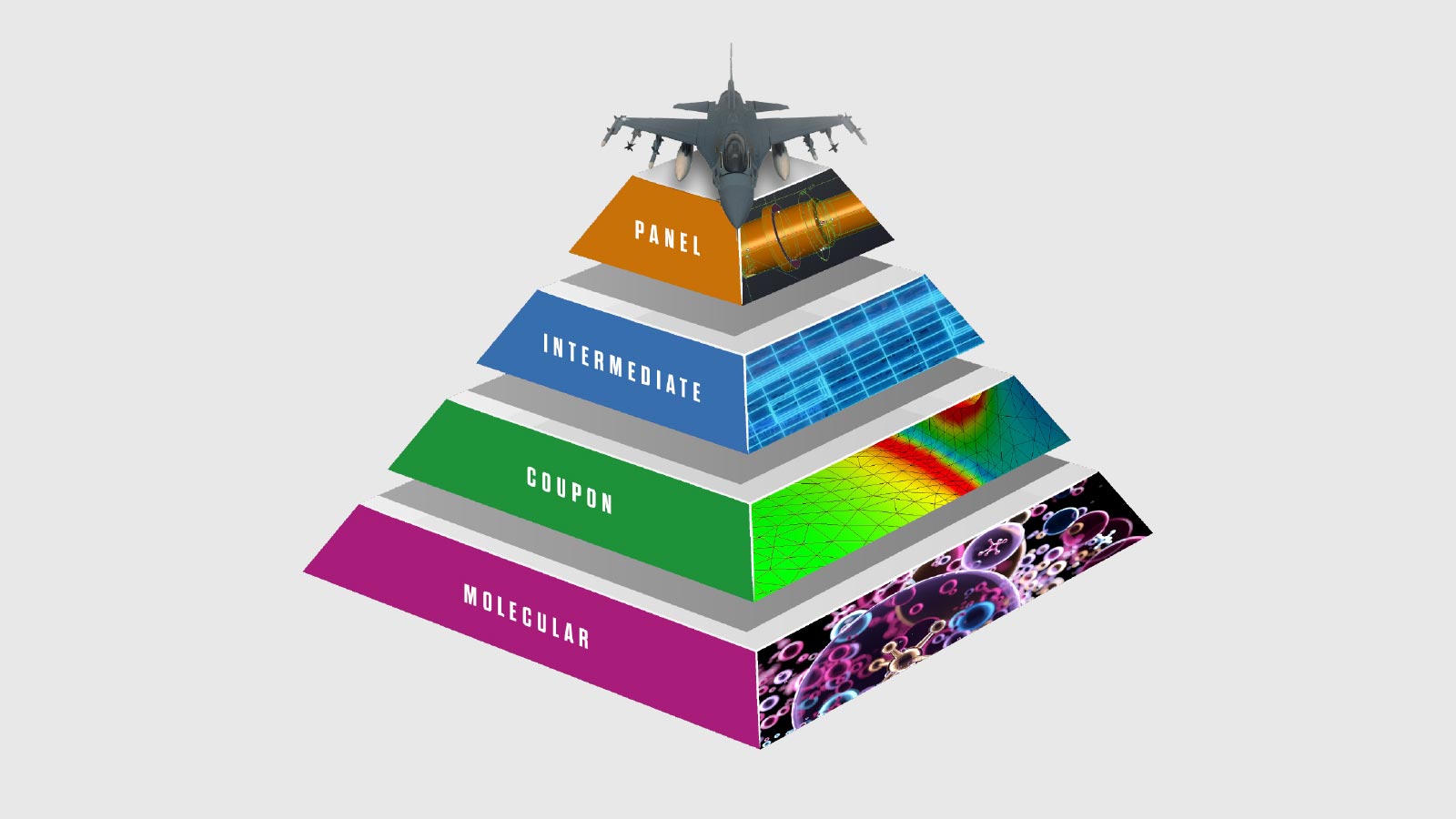Stay Up to Date
Submit your email address to receive the latest industry and Aerospace America news.
Developers are improving finite element analysis software so these tools can be included where they would have the greatest impact on budgets and timelines: the type certification process. Anthony Waas of the University of Michigan explains why the time is right to begin embracing virtual testing in the development cycle.
Boeing touched off a design revolution nearly 20 years ago when it incorporated carbon fiber reinforced plastic (CFRP) and other composites in the design of the 787 as a lightweight alternative to metals. Today, about half the structure of each 787 consists of composites. The Airbus A350 followed with a similar emphasis on composites, as did the Boeing 777X, with the largest composite wingspan.
As beneficial as the shift to composites has been for increased payload capacity and fuel efficiency, the embrace of composites also came with a downside. It showed that introducing a new material and new methods of airplane construction can be fraught. For each of these designs, large numbers of expensive and time-consuming physical tests were required at each stage of development to get things right. In fact, on average it has taken a decade to bring a new airliner design from conception to inception, meaning entry into service. Of those 10 years, several of them involve earning FAA type certification. The U.S. Defense Department has discovered much the same in its development of new warplanes, although it self-certifies its aircraft.
There is a way out of this cycle, and it is virtual testing. Among the many stakes, decarbonizing air travel might be the most critical. New designs won’t enter service in time unless a significant portion of physical testing for design and certification is shifted to virtual testing. In the military realm, the U.S. Air Force’s vision of attritable (low cost and expendable) airplanes also demands an extremely fast design cycle of months rather than years.
At the technology level, this shift will require creating a digital replicate of an actual test. A computer model of the part would be subjected to the same loading conditions, for instance, but digitally. Aircraft manufacturers are doing this now to some degree during the design phase, but they could do more of it. Also, virtual testing has yet to be incorporated in a large way into the process of obtaining a type certification. Doing so will save money and time, given that a physical test can cost 100 times more than a virtual one, and ahead of that test, components must be procured and prepared, measurement and diagnostic tools set up. That process can take several months, whereas a virtual test can be done on a high-performance computer in hours.
Accurate predictions are, of course, essential, and this is especially challenging for CFRP with its complex layering of carbon fiber tape and plastic. Lead engineers and aircraft managers know that current simulation tools cannot accurately capture the way CFRP structures fail when design limits are exceeded. Those of us in the field of computational mechanics and modeling are improving the accuracy of such virtual tests daily through intellectual property agreements that allow us to hone and refine the finite element analysis, or FEA, software created by firms such as ANSYS, Dassault Systems, ESI and NASTRAN. The ABAQUS FEA software that I use divides a component or structure into small elements, and assembles governing equations whose solutions represent how each element should deform during a stress test, for example. Millions of such equations are solved using a high-
performance computer that runs the FEA software. All of the FEA software functions are automated, which rapidly predicts how the component should perform under a range of load scenarios. By comparing those results to physical tests, we can gauge the accuracy of the prediction.
Changes of course must be done cautiously, and that can’t be achieved by any one entity acting alone. Aircraft manufacturers, the Defense Department, FAA, parts suppliers, software developers and universities must work together to make this shift to virtual testing a priority. In particular, FAA, which grants certifications permitting flights in U.S. airspace and in some cases beyond through agreements with other regulatory agencies, should permit more virtual tests for those cases in which predictive power has been demonstrated.
Today, manufacturers plan their physical test programs by listing items in a hierarchical manner, starting with coupon-level tests and graduating to component-level tests that have structural joints, for example, in a protocol called a testing pyramid. The width of each layer of the pyramid is proportional to the number of anticipated tests on the items within that layer. At the base of the pyramid, numerous coupons — samples — of the proposed aircraft’s materials would be tested until the materials with the desired properties are identified. At the top would be the completed prototype aircraft. Because of the voluminous testing at lower layers, relatively fewer tests would be required to verify its performance.
Replacing all layers of such a pyramid with virtual testing is unlikely anytime soon, but significant cost savings can be realized by replacing as many layers as possible. The middle layers of such a pyramid correspond to testing large structural parts. It’s those layers that show the most promise for virtual testing. The result could be a combined physical-virtual test pyramid in which several layers are executed virtually, leading to significant cost savings. Also, a new layer could be added: virtual testing of materials at the molecular level.
Today, the industry has a strong FEA foundation for such a shift. Also, aerospace engineers routinely employ FEA in their design and development work to optimize structures and materials. Likewise, airframe and engine makers use FEA-based predictive tools during development.
Relying on experimental data as is done currently and tribal knowledge that is passed on from generation to generation of engineers is not sustainable in the long run.


Going virtual
Above is a hypothetical planning pyramid describing how design testing could unfold largely virtually. In this example, the only physical testing would be ground testing of a prototype. Today, companies rely on such pyramids to plan physical testing of materials, structures and, ultimately, prototypes.
Related Posts
Stay Up to Date
Submit your email address to receive the latest industry and Aerospace America news.





